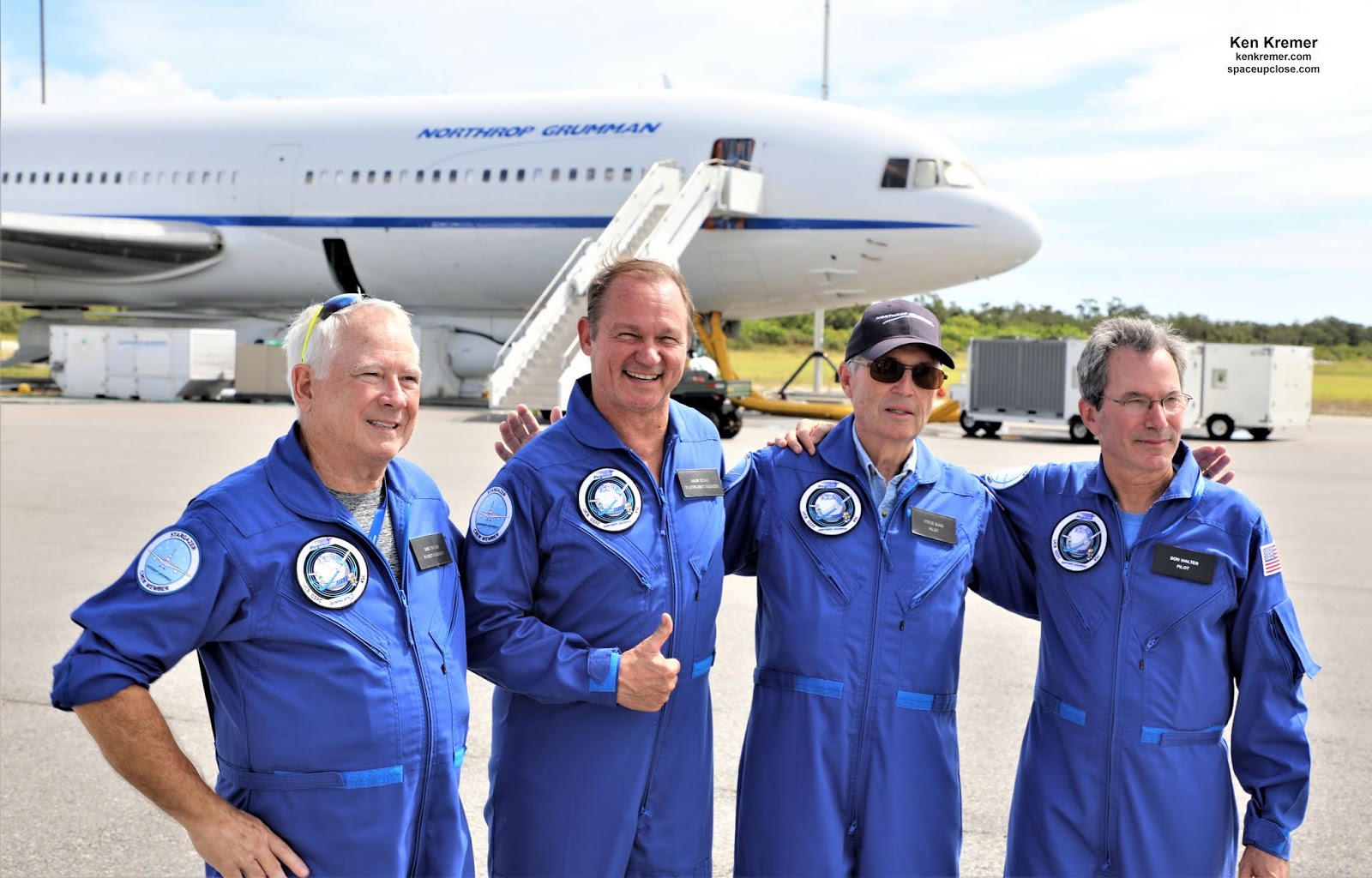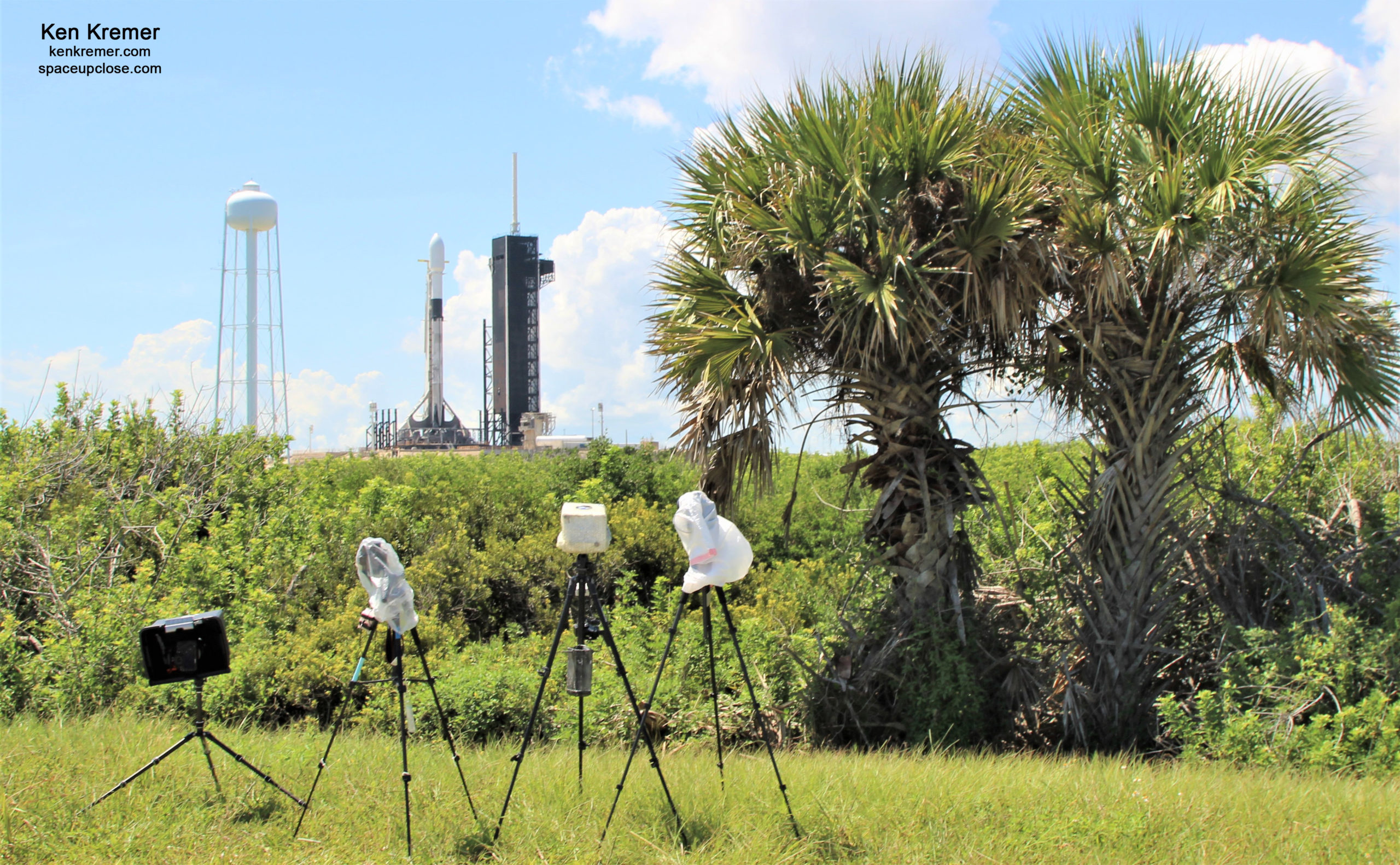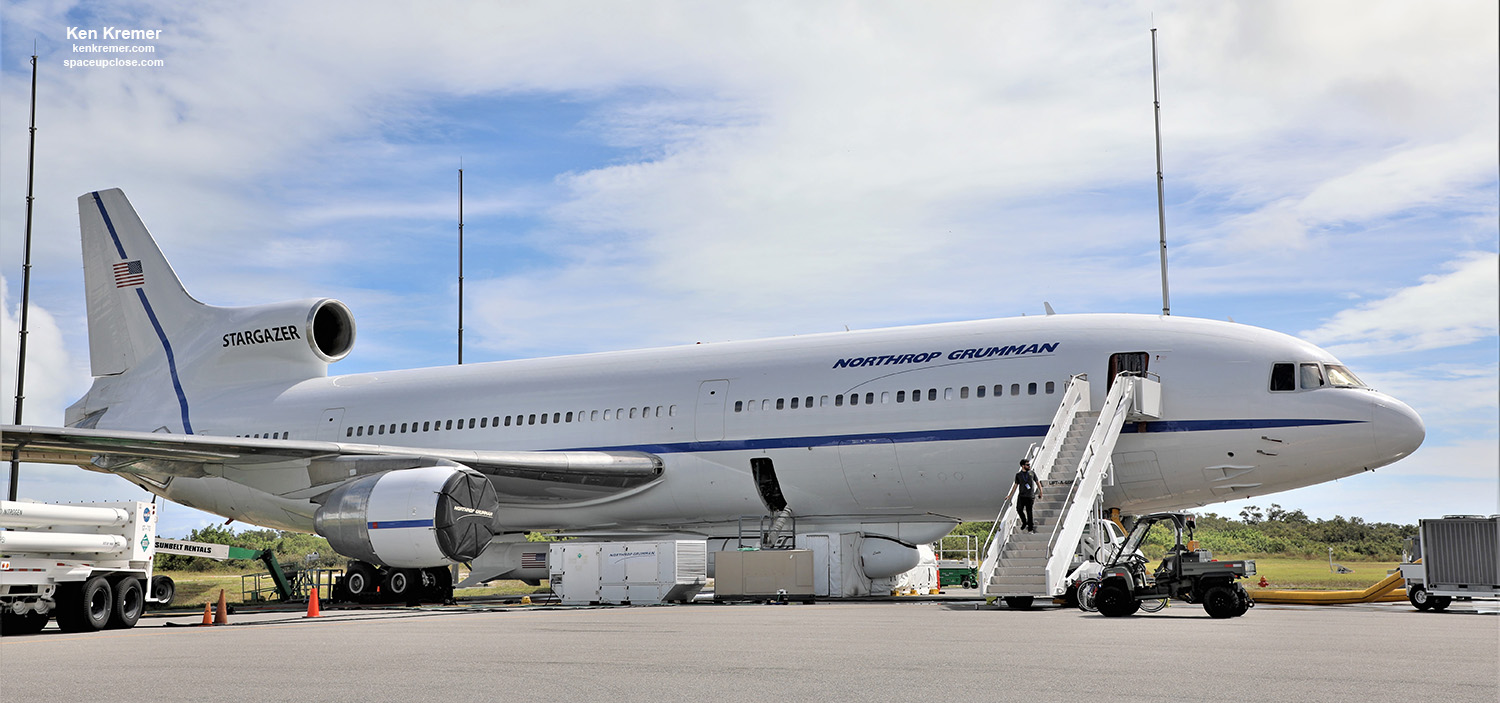
KENNEDY SPACE CENTER & CAPE CANAVERAL AIR FORCE STATION, FL – NASA’s new science mission to study the Earth’s ionosphere – the tenuous upper atmospheric layer at the ‘frontier of space’ forming the dynamic boundary where Earth’s weather meets space weather – known as ICON, is tentatively slated to launch as early as this Wednesday evening, Oct. 9 from Florida – – as poor weather threatens the launch and 1 year after a last minute scrub of the air launched Pegasus XL rocket due to issues then unresolved with the rockets ability to successfully carry it to orbit.
The Northrop Grumman Pegasus XL rocket finally appears to be ready to launch NASA’s ICON science probe after being afflicted with multiple anomalies forcing multiple launch delays over the past two years – as well as a complete change in the launch site from Kwajalein Atoll in the Marshall Islands to the Florida Space Coast.
Extensive testing showed recurring issues with the Pegasus rudder system are now fixed after months of work, say NASA and Northrop Grumman officials.
The ionosphere — a dynamic region of Earth’s upper atmosphere loaded with charged and neutral particles is home to colorful auroras like the Aurora Borealis or northern lights, hundreds of critical communication satellites, and astronaut crew living 24/7 aboard the International Space Station (ISS).
“The ionosphere is continually changing, and it’s very dynamic, so that can have big impacts on our ability to do this kind of communication,” said Nicky Fox, head of NASA’s heliophysics division at NASA HQ at today prelaunch briefing at the Kennedy Space Center.
“So not only is it a great place to go and study plasma physics, but it’s also a region that has a big space weather impact on us.”
Today the media and Space Up Close participated in a tour of the rocket and L-1011 carrier aircraft at the Skid Strip launch site on Cape Canaveral Air Force Station, Tuesday, Oct. 8.
Enjoy our Space UpClose photo gallery of ICON, Pegasus XL rocket and L-1011 Stargazer direct at the Skid Strip.
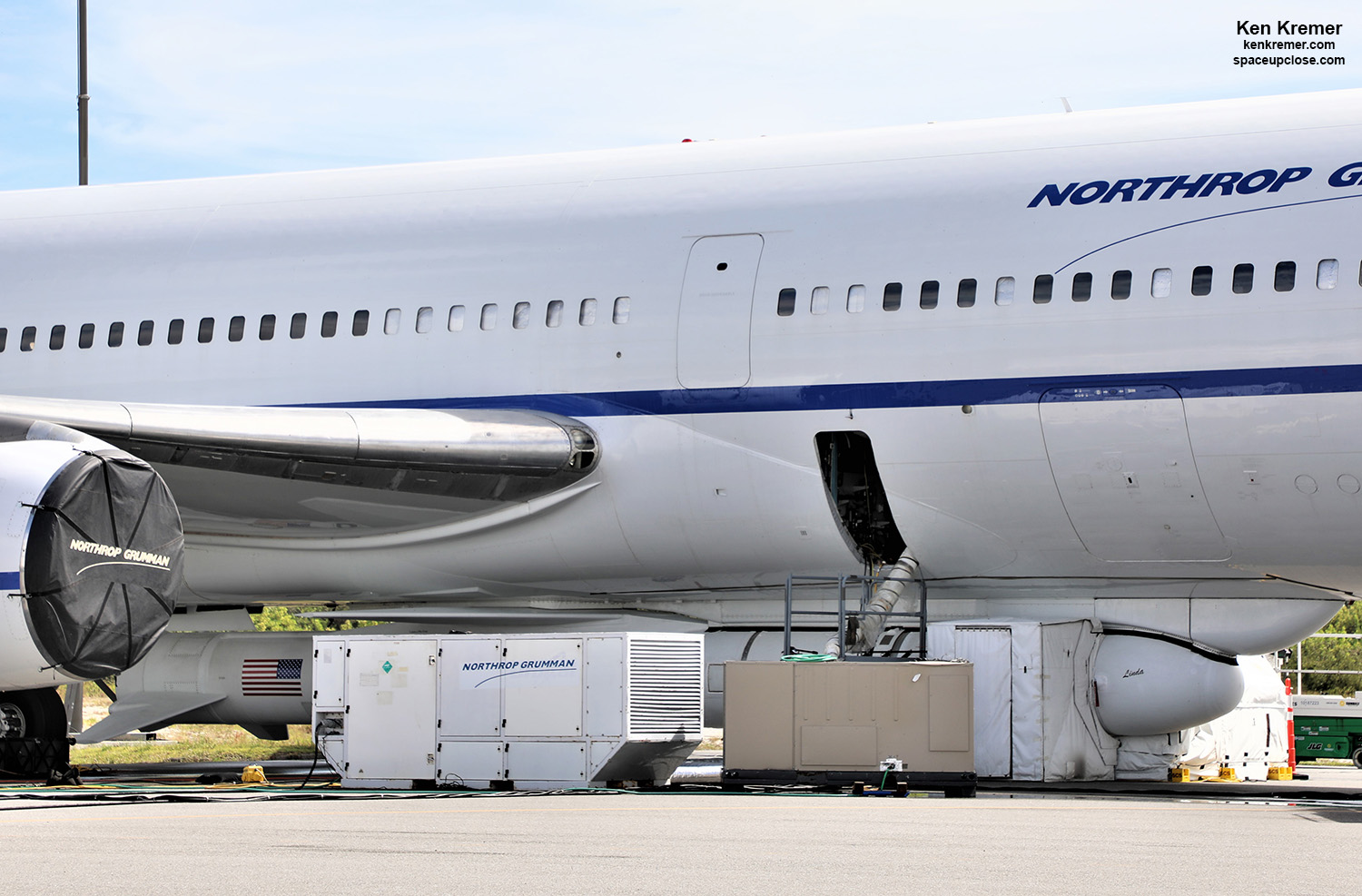
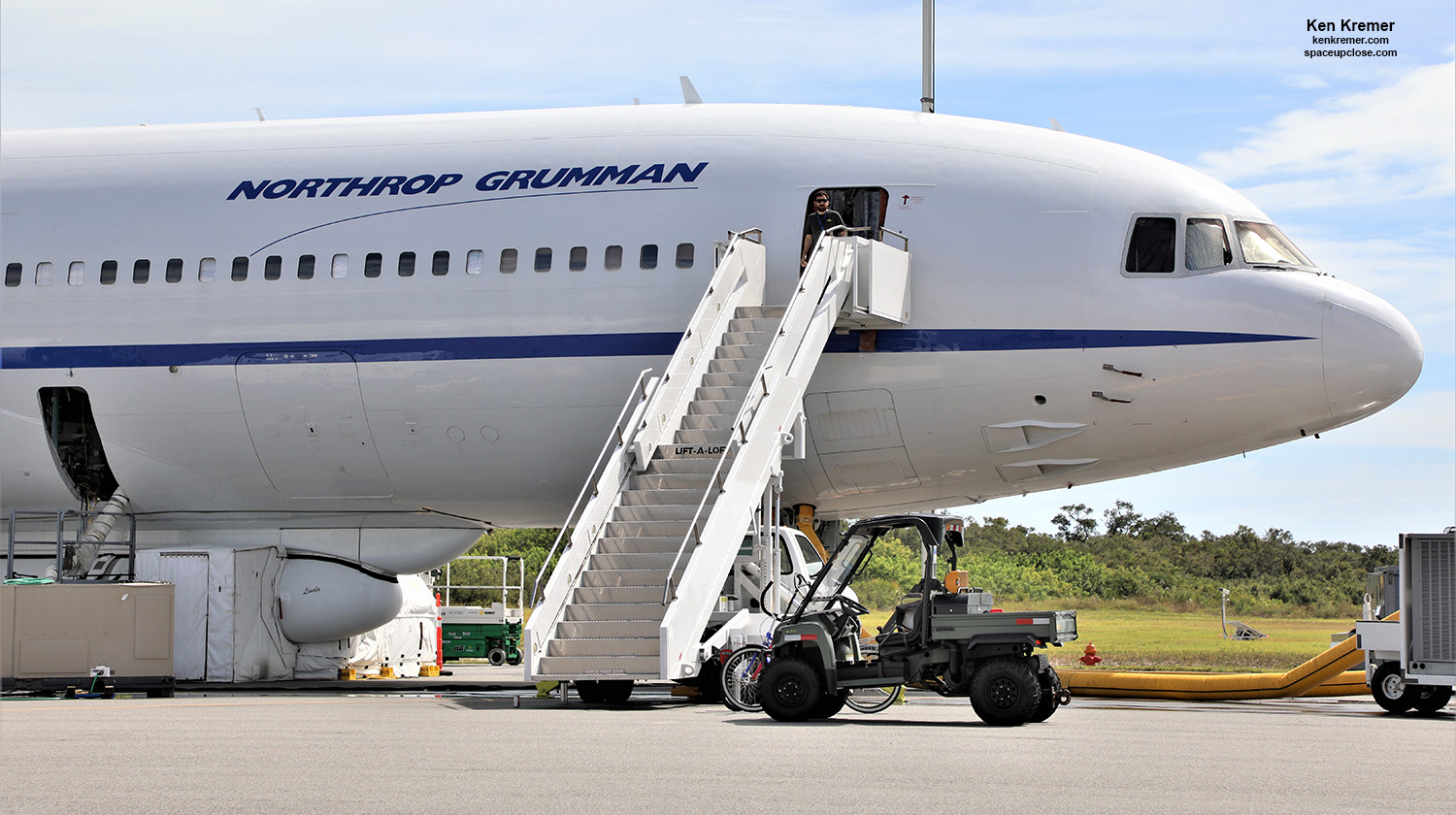
The ICON mission was originally planned to launch in 2017 but delayed due to mishandling of the rocket motors. Since than additional delays were caused last Nov. 2018 by anomalous data signatures with the Pegasus rocket that were detected while the L-1011 was ferrying the probe in flight from Vandenberg Air Force Base, Ca.
“We’ve had some Pegasus issues and are still working on them,” Omar Baez, Sr. Launch Director, Launch Services Program, NASA Kennedy Space Center. told Space UpClose in an interview at the Skid Strip last year.
“When we brought the plane over from Vandenberg it was powered up and we saw some signatures on the Pegasus launch vehicle that did not make us happy. So we have taken the time to change out some components and try to exonerate the issues – and are doing some analysis.”
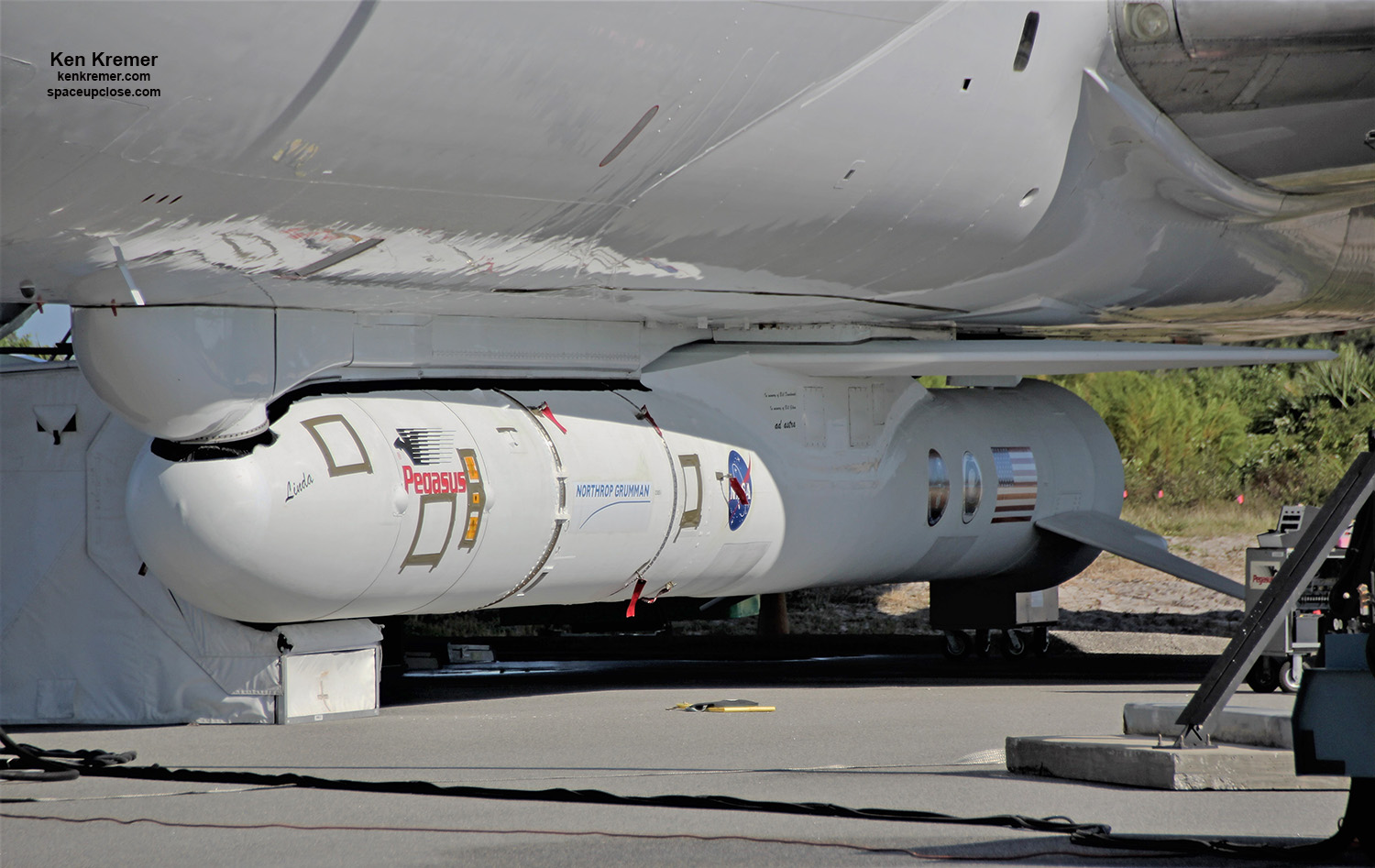
“We thought we had it licked but didn’t. So we are working the issue further to make sure it doesn’t have us licked.”
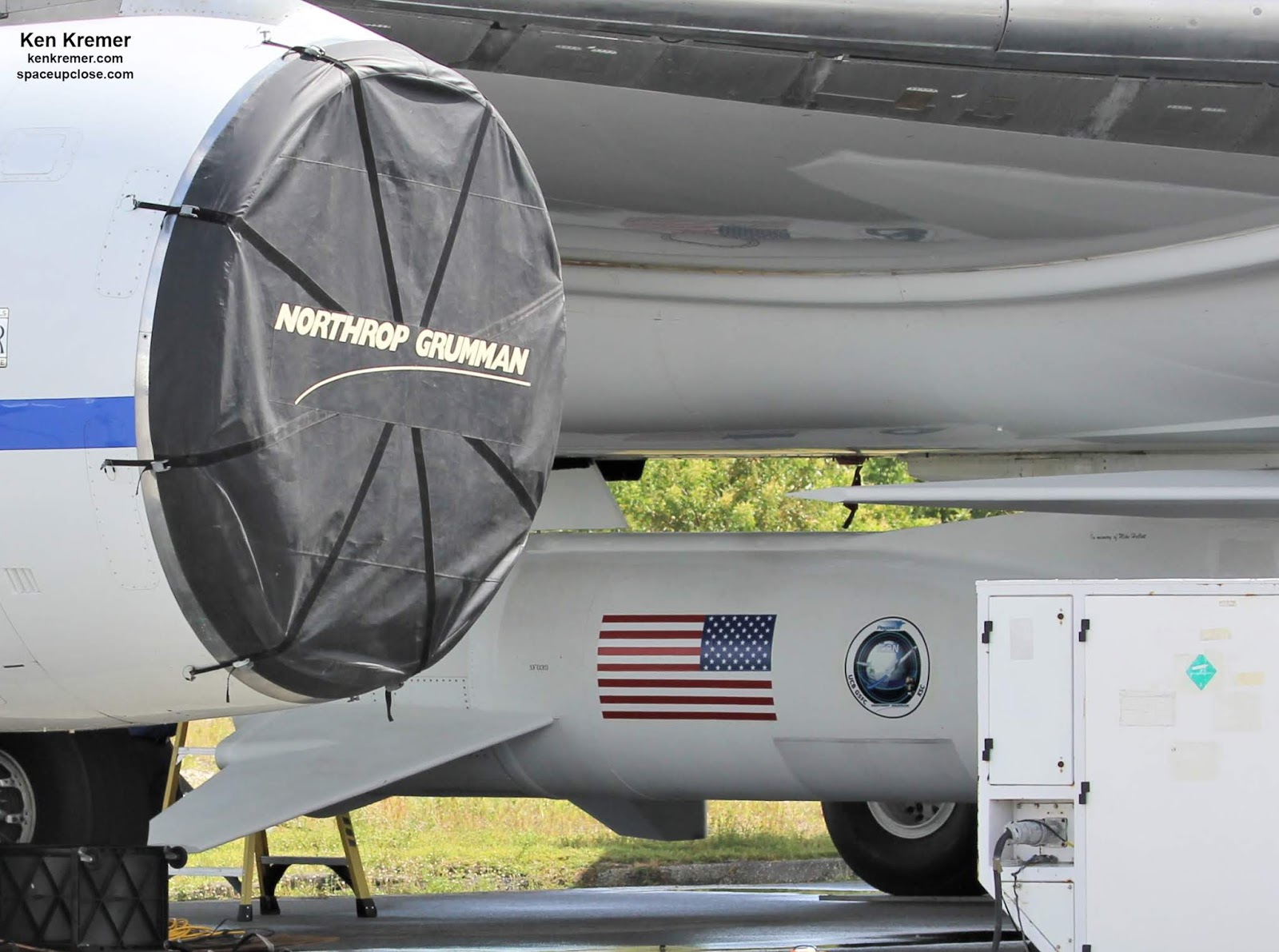
“There were NO out of family readings,” I was told by the Northrop Grumman rep who built ICON.
“No parts had to be replaced.”
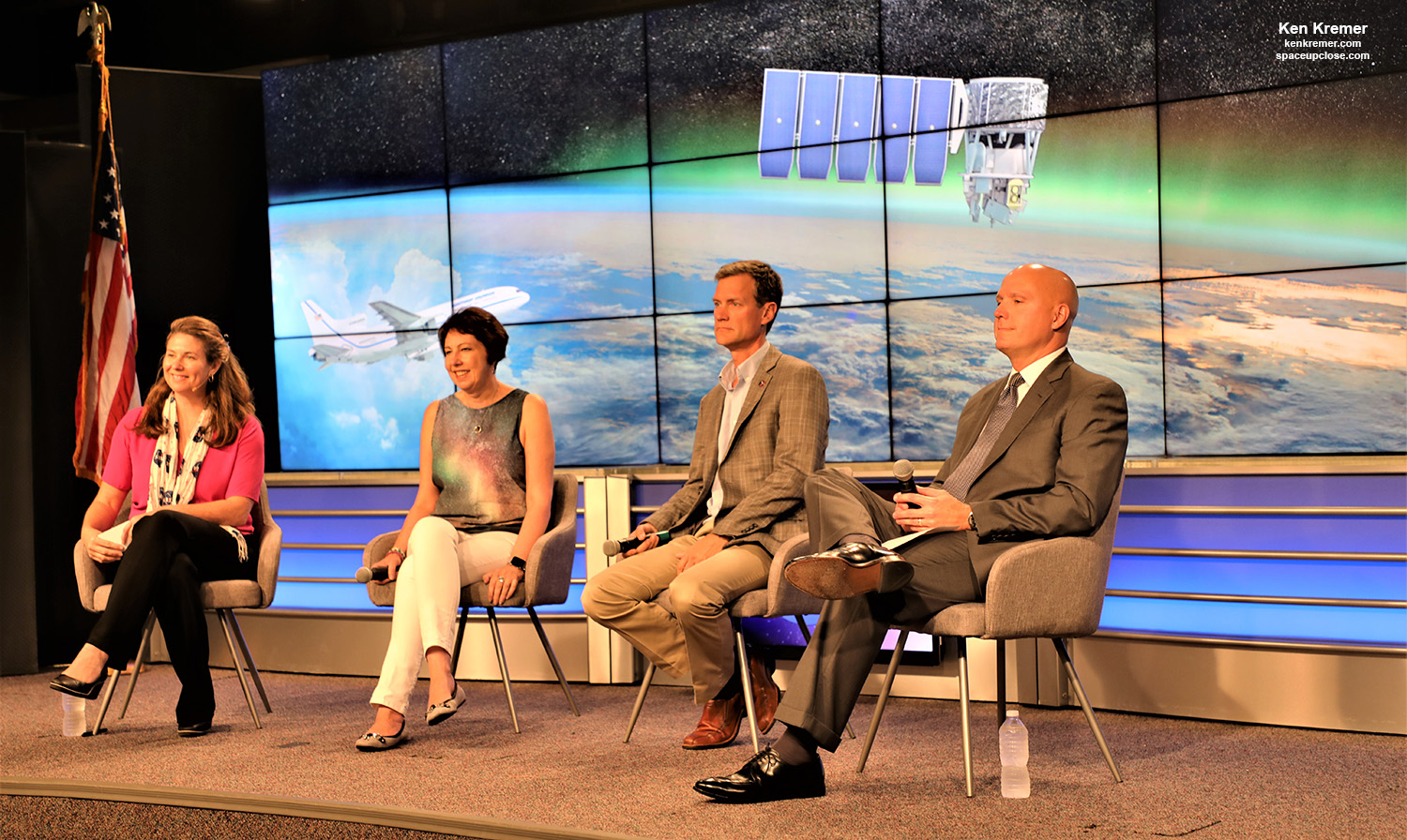
After completing preparations at Vandenberg to reattach the Pegasus XL and ICON to the belly of Stargazer, the aircraft was flown cross country and arrive at Cape Canaveral on Oct. 1.
No further anomalies were detected with Pegasus, said Baez at todays KSC briefing.
As currently planned the ICON satellite mission is expected to launch tomorrow, Wednesday, October 9, 2019 with a 90-minute launch window opening at 9:25 p.m. EDT (0125 GMT). Release from the Stargazer is anticipated for 5 minutes later at 9:30 p.m. EST, said the team.
After LRR approval review the L-1011 Stargazer will fly to a target box about 100 miles off the east coast of Daytona Beach Oct. 9.
“We will fly the airplane in a race track pattern to the drop point,” says Baez. That drop point is about 100 nautical miles east of Daytona.
Given the race track flight pattern the flight team will have two chances to deploy the Pegasus within the 90 minutes launch window if conditions are unfavorable on the first attempt.
Stargazer then soars aloft and to drop deploy Pegasus at an altitude of about 39,000 feet (12,000 meters) over the open Atlantic Ocean on an easterly heading of 105.0 degrees and 27 degree inclination to the equator.
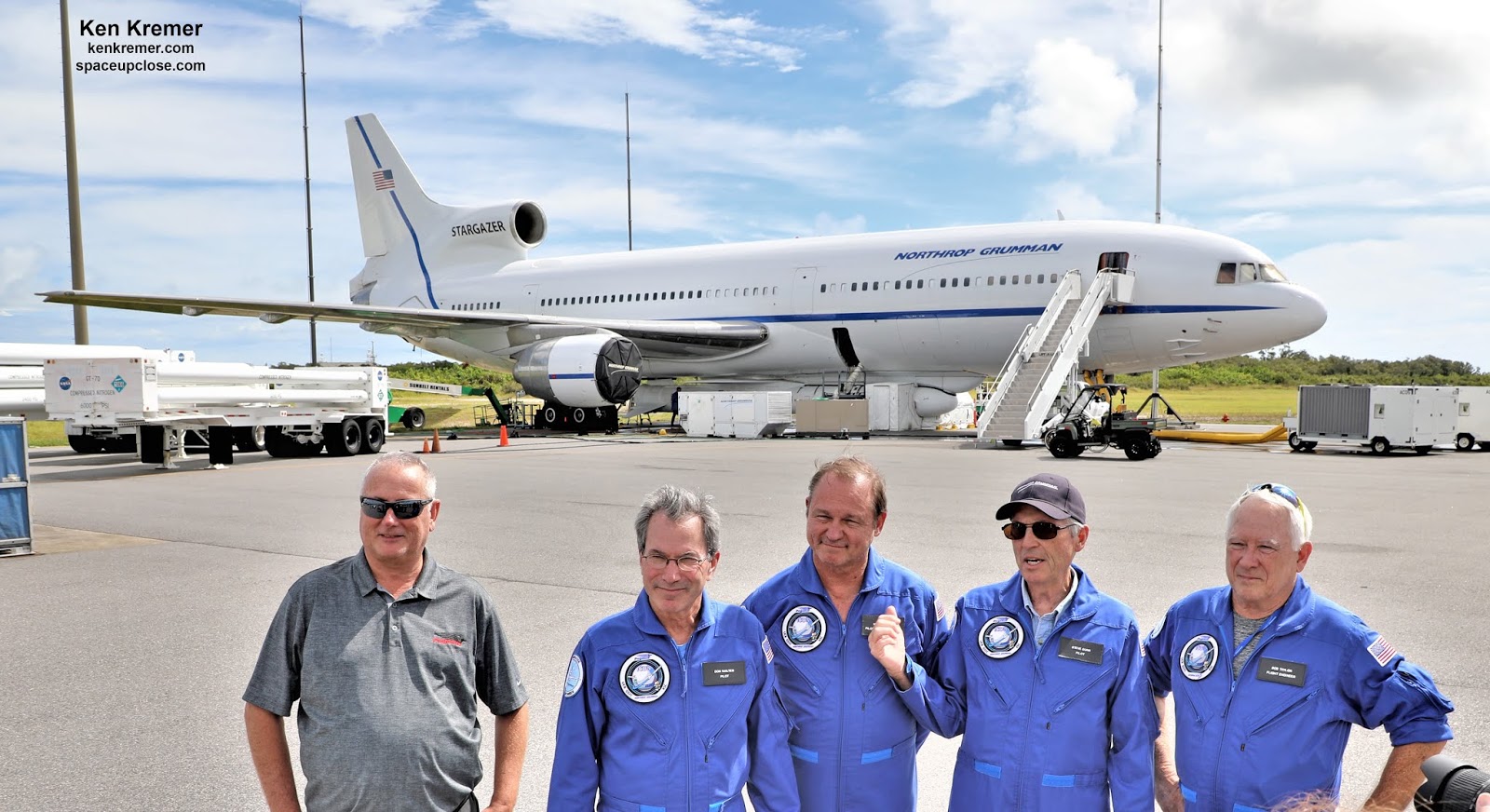
The 3-stage solid fueled propulsion Pegasus basically functions as a cruise missile for science for deploying small, lightweight satellites to low Earth orbit (LEO) – in this instance for NASA.
After dropping horizontally for a 5 second free-fall, the first stage of the Pegasus ignites.
The ICON payload will separate and reach orbit about 11 and a half minutes later at an altitude of 380 miles (575 kilometers).
What is the flight profile?
“We fly to 39,000 feet. Drop Pegasus and arm the flight termination system at 2.5 seconds,” Bryan Baldwin, Pegasus Program Manager, Northrup Grumman, told me in a Skid Strip interview last year.
“First stage motor fires after about 5 seconds. It burns for about 88 seconds. Then separate 1st stage motor and ignite 2nd stage. It burns for about the same amount of time – then coasts to proper altitude for ignition of the 3rd stage motor and finalizing orbit. We separate the spacecraft at the designated time. The whole flight takes eleven minutes to spacecraft insertion.”
ICON circles the Earth every 97 minutes.
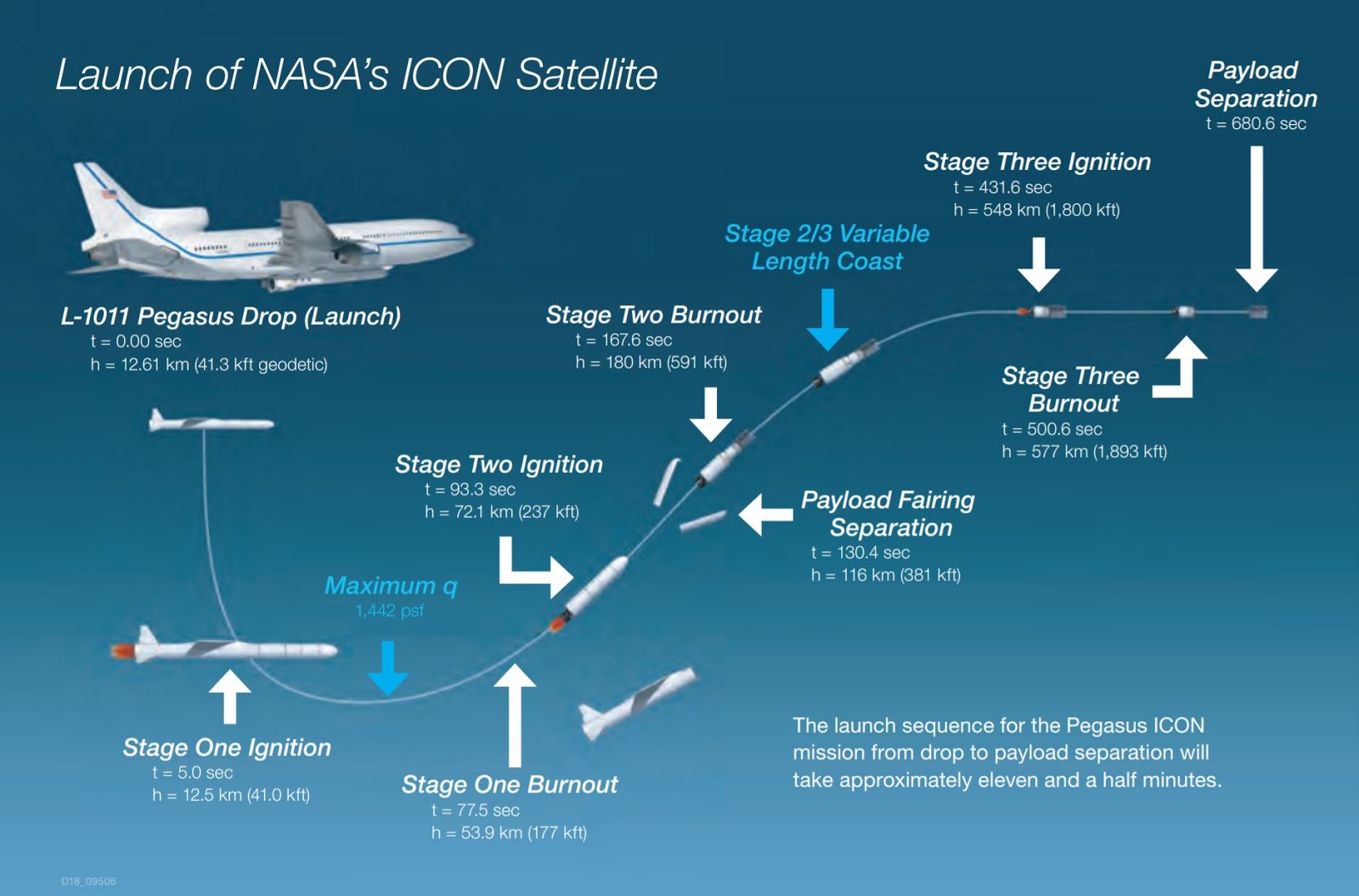
NASA TV will broadcast the launch live starting at about 9:15 a.m. EDT. Watch NASA TV and the agency’s website
A back up launch opportunity exists on Oct. 10 during the same 90-minute-long window.
The refrigerator-sized ICON weighs 634 pounds (288 kg) and measures 76 inches long and 42 inches wide.
“ICON orbits at an operational altitude of 575 km – and the instruments are all looking down in a horizontal orientation all the time. Except the ion meter which makes measurements at the orbiting altitude,” said Robert Lockwood, Program Director, Science & Environmental Satellites, Northrop Grumman, in an interview with Space UpClose at the Skid Strip last year.
“There is no fuel onboard.”
“It uses regular reaction wheels for standard pointing at LEO.”
ICON is encapsulated inside the Pegasus nose cone. The rocket is 57 feet (17 meters) long, 4.2 meters wing diameter and weighs 52,920 pounds (24,000 kg).
The cylindrically shaped spacecraft is about a meter in diameter. It is powered by a single 5 panel solar array that when deployed extends to the length of a door – 8 1/3 feet long and 2 ¾ feet wide.
ICON will study the ionosphere – “the mixed layer of charged and neutral particles extending from about 50 to 360 miles above Earth’s surface, through which radio communications and GPS signals travel, and the processes there that can distort or even disrupt these signals. Knowledge gleaned from this mission will aid in mitigating its effects on satellites and communications technology worldwide.”
During a baselined 2-year-long mission, ICON will explore the turbulent upper atmospheric ionosphere zone at the interface between the Earth’s terrestrial weather below and space weather above where giant winds whip up the particles – ionized by solar radiation.
The ionosphere is a “dynamic zone high in Earth’s atmosphere can be a source of great beauty such as the aurora, but can also be disruptive to radio communications and satellites and astronaut health. ICON will help determine the physical processes at play in this “frontier of space,” thus paving the way for mitigating their effects on our technology, communications systems and society.”
ICON was built by Northrop Grumman and is based on the LEOStar-2 bus.
The science operations team is led by the University of California, Berkeley. The probe is equipped with a suite four science instruments that will track changes physical and chemical properties of the neutral and charged atmospheric particles; MIGHTI, EUV, FUV and IVM.
“The ICON mission is looking at the interaction of the ionosphere and the charged layer of particles at the top of the atmosphere with space weather,” Lockwood explained.
“It has 4 instruments altogether including two UV instruments [EUV & FUV], an in situ ion velocity meter [IVM] to measure the speed of charged particles, and MIGHTI to measure the speed and temperature of particles in the neutral atmosphere.”
“We know there are effects and correlation with what’s happening in the atmosphere and weather. But we don’t really know why.”
“So the science we are doing with ICON is are making measurements to understand how the weather systems effect the profile in the ionosphere.”
Overall this mission marks the 44th launch of Pegasus XL since the maiden flight in 1990.
The last Pegasus launch took place in December 2016 for the launch of NASA’s $157 million CYGNSS hurricane forecasting mission. Space UpClose was on hand – my photos herein.
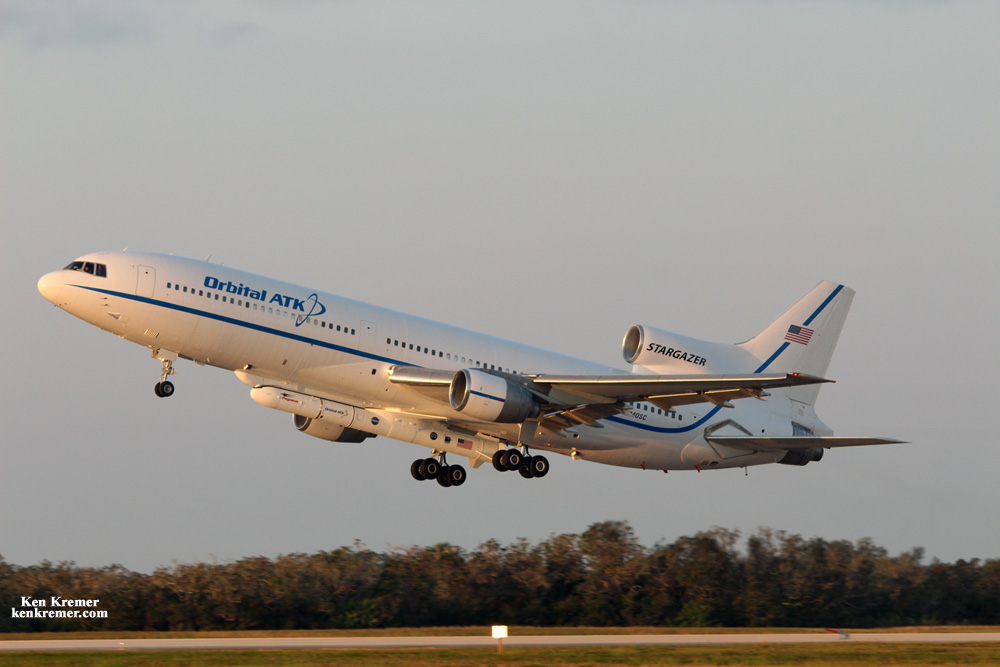
Pegasus XL was the world’s first air-launched rocket launching satellites to orbit. It utilizes the L-1011 carrier aircraft as an “air-breathing reusable first stage” according to Northrop Grumman.
The Northrop Grumman team told me they hope to win contract to launch additional Pegasus rockets and have parts for about one and a half rockets in inventory.
ICON is a NASA Explorer class mission managed by NASA’s Goddard Space Flight Center, Greenbelt, MD.
